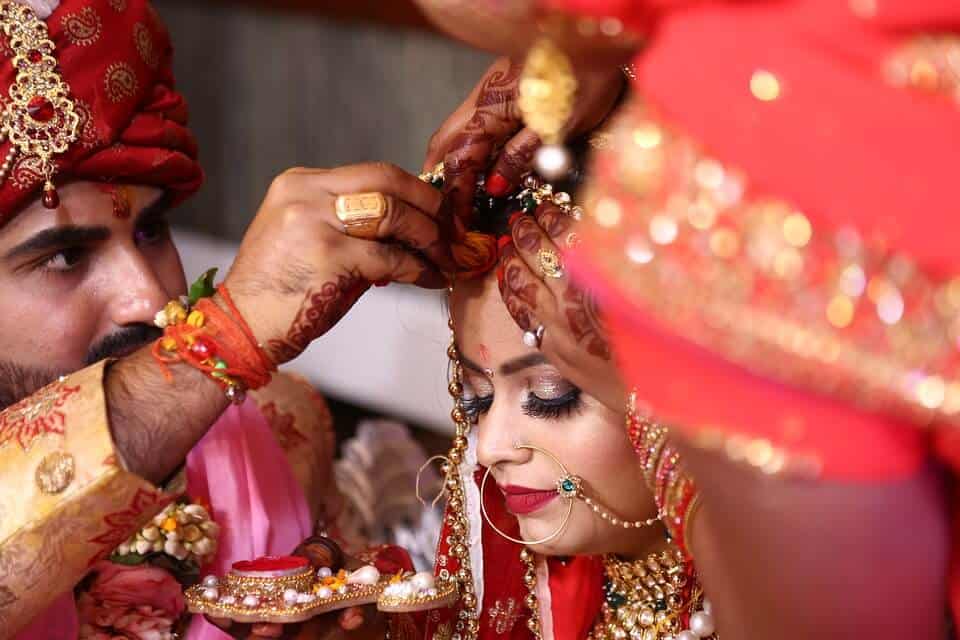
Hindu weddings are a treat to witness because they are not just the union of two beautiful souls but rather a spectacular, incredible journey that takes place over several days in which traditions and customs are practiced, and heritage is honoured.
Whether you are a wedding guest at a Hindu ceremony or looking to indulge in your cultural practices to the maximum, here are some of the most intriguing Hindu wedding traditions you can expect.
Some Hindu wedding celebrations in Italy consist of more than 40 traditions! This guide outlines some of the most practiced wedding traditions in the Hindu culture, including what to wear to a Hindu wedding.

Photographer: gauravfkumar
This is a pre-engagement ceremony at the bride’s home with her loved ones and at the groom’s house. Pithi involves sharing love and best wishes, and it is a gathering of relatives and friends but often extended relatives as well.
South Asian weddings are big on including as many people as possible, from relatives to acquaintances!
Chick flour paste, turmeric powder, and rose water are applied liberally to the bride and groom’s faces, arms and legs because it polishes the skin and gives it a good glow.
Yellow is traditionally the preferred Indian wedding colour palette. This is one of the many Hindu wedding traditions that are practiced frequently.
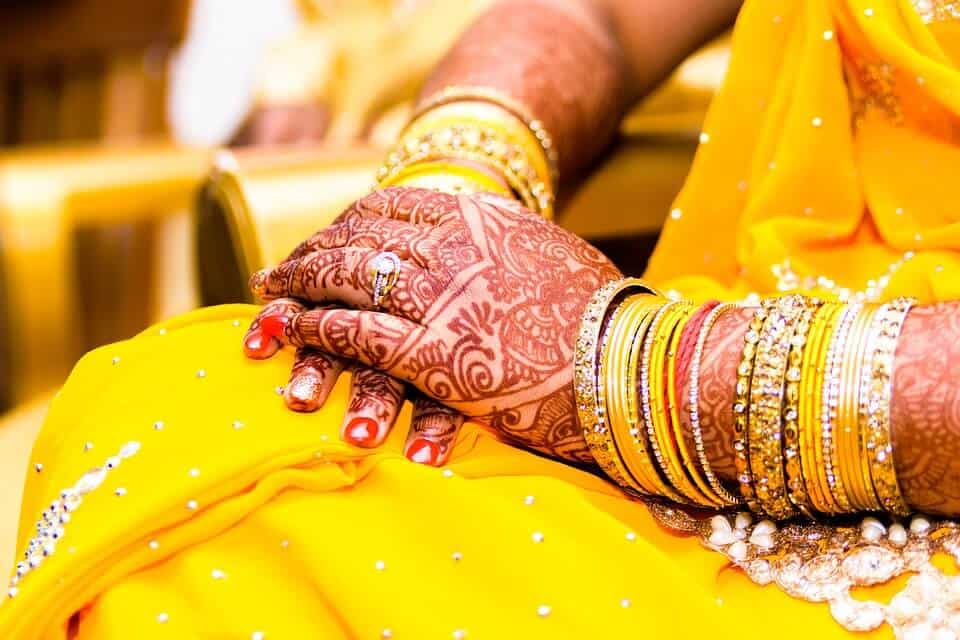
The engagement is usually set through a process called Muhurat, which determines the best time for a couple to get betrothed according to various astrological readings carried out by an expert.
The Sagai ceremony kick-starts the wedding celebrations and consists of exchanging rings and distributing sweets and desserts, including throughout the immediate neighbourhood.
Many families may box up sweets and send them to the houses of friends and relatives. The groom also put a ‘tilak’ on the bride's forehead to signify their impending nuptials and express his hopes and dreams of a happy life ahead.
Sangeet and Mehndi are widely considered the most joyous and entertaining ceremonies out of the three commonly observed in a traditional Hindu wedding.
The sangeet ceremony is also a hit among the younger family members as it features more dancing and extravagance than the other ceremonies. Dances are usually performed in groups and sometimes rehearsed for months to sync perfectly. Most of the songs that are danced to are either traditional folk songs or Bollywood songs.
Mehndi is also the Indian name for henna, and it is a bridal custom that entails applying henna to the hands, arms, and in some cases, feet of the bride, a day or so in advance as henna takes a few hours to set properly.
Siblings, parents, and guests may also apply mehndi to join in the festivities and to signify their near relation to the person getting married.
Henna patterns are usually drawn by henna artists who have years of experience creating highly detailed designs with a high level of intricacy.
The bride may also hide her new husband's name in the palms of her hand to show her love!
Henna is traditionally believed to bring happiness, ward off the evil eye, and create love in the hearts of the bride’s new in-laws. It also cools the body down, relieves tension and stress, and is believed to be great for headache prevention.
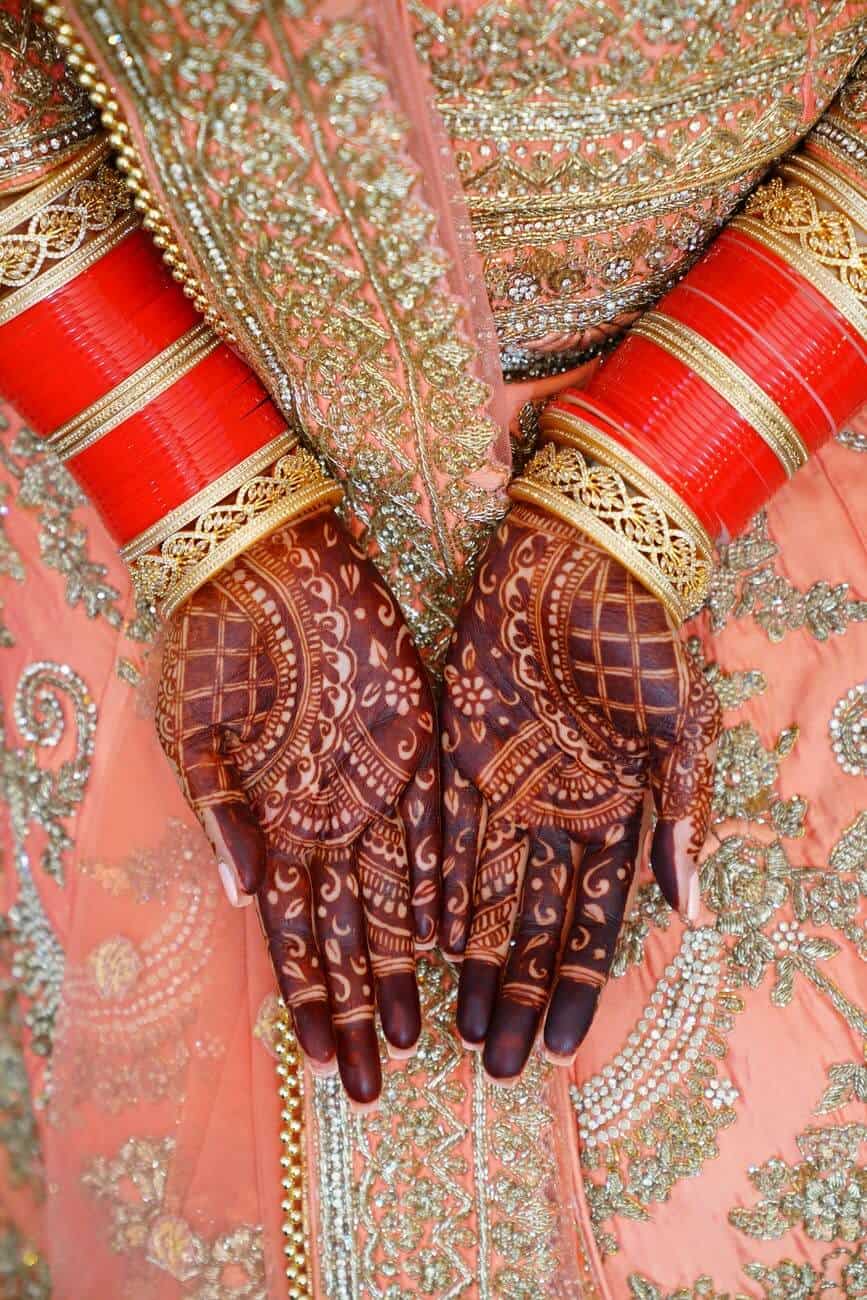
This is the main wedding reception where most guests will be invited as the sangeet ceremony is more for people close to the couple as the event is not as formal as the baraat.
The baraat or vara yatra, as it is also called, is the arrival of the groom to take his bride home. As the name suggests, the arrival is met with a lot of fanfare, treating the groom like a prince or a celebrity as he arrives either riding a horse or in an uber-expensive car specially procured for the purpose and decked out with hundreds of flowers and ribbons.
The groom will never arrive alone at the venue and will be accompanied by dozens and dozens of his friends and loved ones that will all be dancing and singing.
Special bands that play trumpets and drums are usually hired for the baraat's arrival at the venue. Since the baraat reception costs more than other ceremonies due to the more significant number of guests, Hindu wedding packages are often offered by hotels and banquet halls that are preferred wedding venues.
When the groom arrives, he meets the bride and her family. And there's lunch or dinner at the end.
Envelopes of money are usually given to either the bride or the groom as other presents are typically not offered at a Hindu wedding. Presents are usually given before the reception or a few days before, while monetary gifts are more common.
Modern Indian weddings even have a 3-tiered cake, but the catering is always local traditional delicacies.
There’s no doubt that planning a Hindu wedding is an exciting time.
And while it contains many moving parts, lots of individual events, tons of outfit changes, and many traditions, it should still be unique.
Your love story is fantastic, and your wedding experience should also be.
Making your Hindu wedding in Italy unique can be done by adding fireworks, different culinary experiences, and other things that are near and dear to your hearts. Italian wedding planners like VB-Events will help you find the perfect experiences to include in your special day.
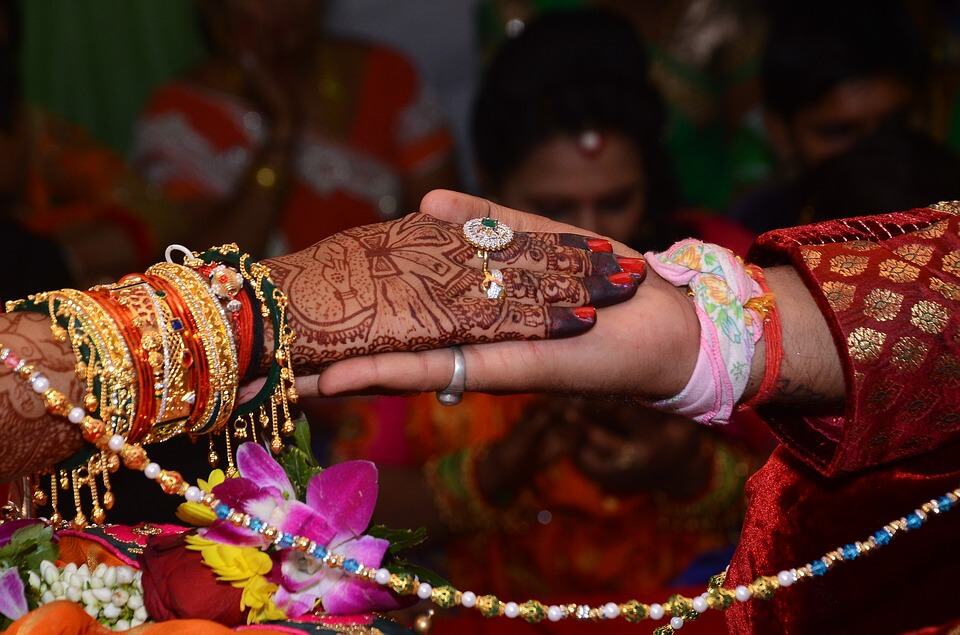
This is one of the more special Hindu wedding traditions in which the bride’s family lovingly welcomes the groom into their lives and places a ‘tilak’ which loosely translated means ‘mark’ on the groom’s forehead.
This is also symbolic of his changed status as a newly married man, and the traditional Hindu bride wears the tilak either on her forehead or in the parting of her hair for the rest of her life (she reapplies it daily) if she wishes to show the world she is a married woman.
In addition, both the bride and groom will receive garlands of flowers or currency notes from each other’s families to wear around their necks.
The Hindu wedding mandap is where the ceremonial marriage rites occur, which happens after the baraat has ended. The setting of the mandap itself is stunning and artistic to look at, and it is symbolic of the start of married life and all the joys within. The Hindu marriage simply cannot take place without the mandap!
The mandap itself is a structure with four pillars that people have slightly varying interpretations of. However, the pillars can be understood to represent the four stages of one’s life, namely Brahmacharya, Grihastha, Vanaprastha, and Sanyasa.
The small haven or fire burning in the middle of the mandap ensures the couple's future happiness and purges evil.
The couple proceeds to circle the fire seven times to complete the marriage rites, and this is called Mangalphera.
Before the mandap custom begins, there is usually a ‘jhoota chupai’ in which the bride’s sisters, cousins, and friends hide the groom’s shoes, and he has to offer money to all of them to get them back.
It is usually a Hindu custom where the groom drinks sweetened milk, and lots of jokes between the bride and her friends ensue.
Praying to the God Ganesh is pivotal in Hindu wedding traditions. This puja can be done on any of the days or more than once, and many wedding celebrations begin with this puja.
Ganesh removes the evil eye from the happy couple, blesses them, and removes difficulties from their future. This puja is also done so that the wedding proceedings go on without any hiccups and no unforeseen events.
It's a common tradition for couple and guests to wear traditional Indian clothes, such as saris with shades of red or maroon with gold, they are an unsaid rule for Hindu weddings or baraat dresses.
Every bride must wear red as black and white are associated with bad luck and mourning.
Most brides need anywhere from 4 to 10 dresses depending on how many public appearances they will make before heading off on their honeymoon.
Every ceremony requires its own elaborate outfit decorated with handwoven embroidery, sequins, pearls, gems, gold thread, and so forth.
Saris are a traditional, much loved, and worn Indian outfit, and a red sari is the ultimate bridal statement.
However, it can be challenging for Hindus living away from home to find the best wedding dresses as the cost of multiple receptions can be higher in other countries.
The cost of a Hindu wedding in Italy can vary depending on how many guests and events are included. But, if you plan on shopping for a traditional Hindu wedding dress, you may pay more in Italy as it is a specialized elaborate gown.
Suppose you are a wedding guest wondering what to wear to a Hindu wedding. In that case, you will likely be expected to wear extravagant and luxurious clothes, whether it is silk, organza, or velvet, and the more elaborate, the better! And of course, the Sari is traditional clothing worn by many wedding guests.
So, what to wear to a Hindu wedding? This is your time to pull out all the stops and get glammed up!
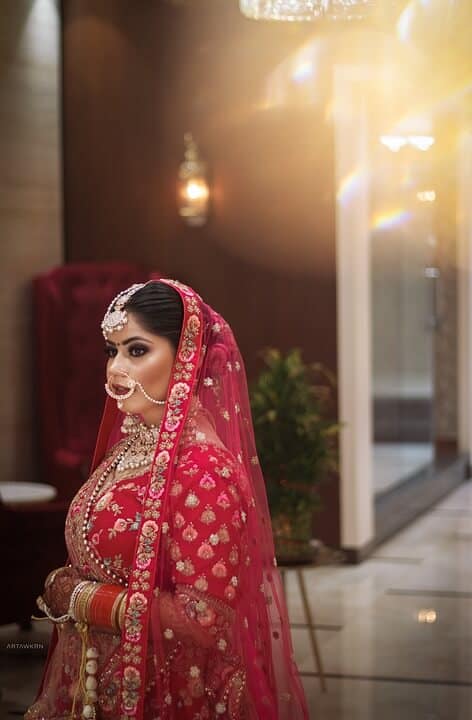
Kanyadaan is the act of the parents giving the bride away and wholeheartedly expressing their acceptance and joy at the union.
The bride’s father typically gives away his daughter to the groom and puts her hand in his.
Hastamelap is when the bride’s mother prepares and pours sacred water on the couple (usually their hands), and this is symbolic of the bride’s new life that is waiting for her away from her parents. Next, a Jai Mala may follow; this is a custom in which the bride and groom exchange vibrant floral garlands that reach the waist.
Hindu weddings in Italy can be just as dazzling and spectacular as they are in other countries worldwide.
They are an incredible experience over several days and feature interactive events, lots of dancing, celebrations of love, and many Hindu wedding traditions.
If you want to host a wedding in Italy with Hindu traditions, we’re here to help.
Contact VB-Events Italian Wedding planners to inquire about Hindu wedding packages or to simply find out the cost of a Hindu wedding in Italy.
Together we can plan an unforgettable wedding celebration including as many or as few Hindu wedding traditions as you like.
You must be logged in to post a comment.